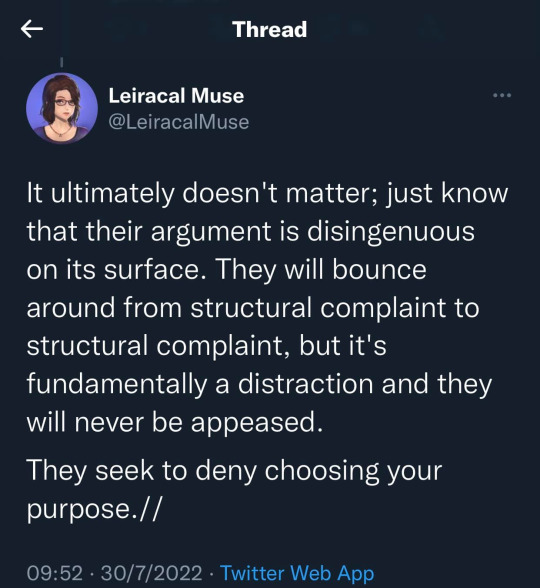Text
youtube
Great video by Pin & swords on the French Year IX and XI light cavalry sabres.
14 notes
·
View notes
Text


French infantry officers 'Sabre à Garde Tournante'
This is my second 'Sabre à Garde Tournante' which translates to sabre with a rotating guard, referring to the unique side bar that folds in front of the knuckle-bow when not in use.


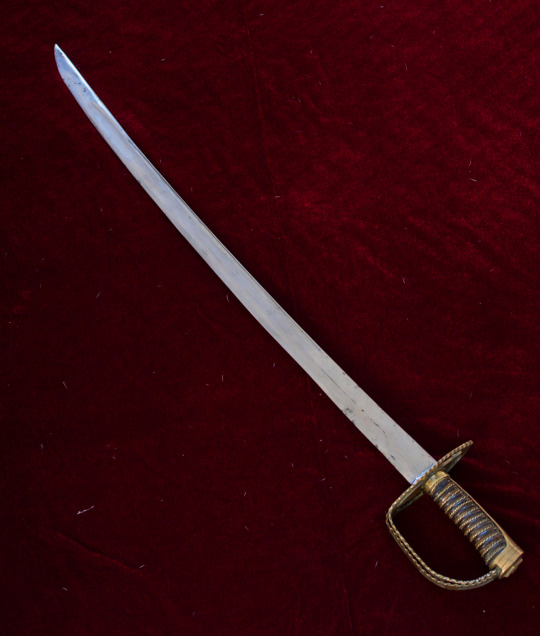
This style of guard became popular in France around 1784 and remained fashionable until about 1800. For a short period the English also followed this trend and they can occassionally be found on 1788 Pattern light cavalry officer swords or 1786 regulation infantry officers swords. But the style faded out with the introduction of the 1796 Patterns. Interestingly Austria actually adopted the rotating guard into their regulation patterns and there it remained in use until the middle of the 19th Century.
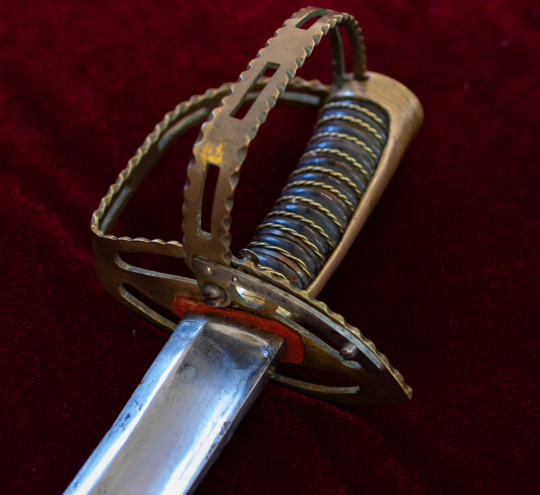
This example has a single side guard that folds out to the outside of the grip that has been scalloped along the edge with a decorative feature that is frequently seen on these swords.

The short blade length and the single frog stud on the scabbard chape mark this as having belonged to an infantry officer of a lower rank who still marched with his men.
Stats:
Overall Length - 765 mm
Blade Length - 740 mm
Curve - 14 mm
Point of Balance - 110 mm
Grip Length - 125 mm
Inside Grip Length - 105 mm
Weight - 610 grams
34 notes
·
View notes
Text
The sword of the day is the pata.

This is an Indian sword, where the grip is inside a metal gauntlet. It was by no means a common weapon, and it required specialized training to use. Despite seeming like a fantasy weapon, I’ve only ever seen it depicted in one movie; the fantasy cult classic Willow from 1988.
41 notes
·
View notes
Text
youtube
History behind the US Marine Corps' Mameluke officers' sabre.
5 notes
·
View notes
Text



French 'Sabre a l'Orientale' cavalry officers' sword
The 'Sabre a l'Orientale' (often called mameluke swords in English) gained popularity with fashionable officers during the French campaign in Egypt and Syria (1798 to 1801).
Initially, these swords would have been acquired in battle either as a trophy, from being given as a token of respect by allies, or from a surrendering foe.
However, as the fashion spread throughout Europe, local sword makers and cutlers began to produce their own interpretations of the style, such as the regulation dress sabres of British Lancers.
This sword style remains in service today as the British 1831 Pattern General Officers sword and US Marine Corps Officer dress sword.

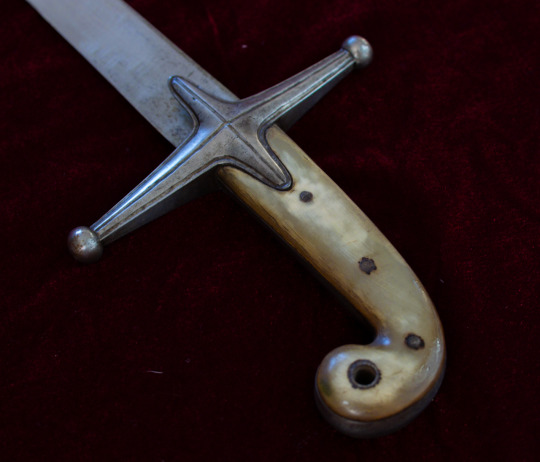
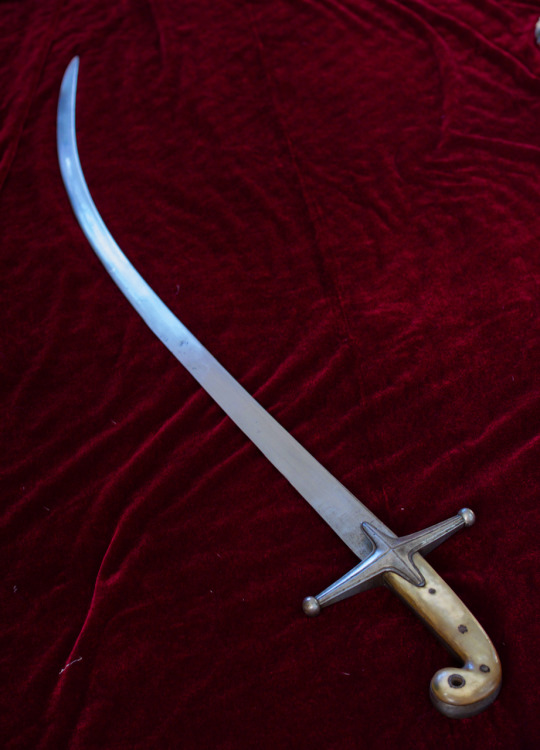
My sword likely dates from 1810 to 1830 and caught my interest because it features an Eastern-produced shamshir blade mounted in a European-made mameluke-style hilt with cow or buffalo horn grip scales. The sword is plain and functional without the ornamentation typically found on swords belonging to senior officers. Going by the style of scabbard drag, this sword originally belonged to a French cavalry officer.

Stats:
Overall Length - 950 mm
Blade Length - 805 mm
Curve - 75 mm
Point of Balance - 1730 mm
Grip Length - 125 mm
Inside Grip Length - 94 mm
Weight - 920 grams
90 notes
·
View notes
Text
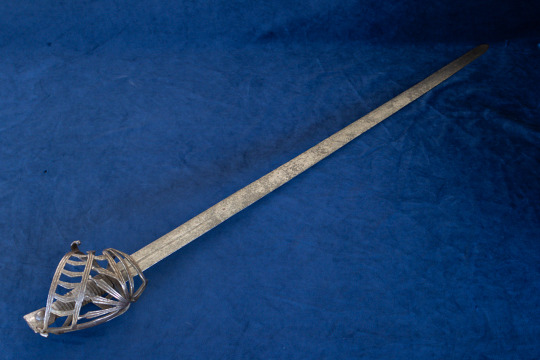
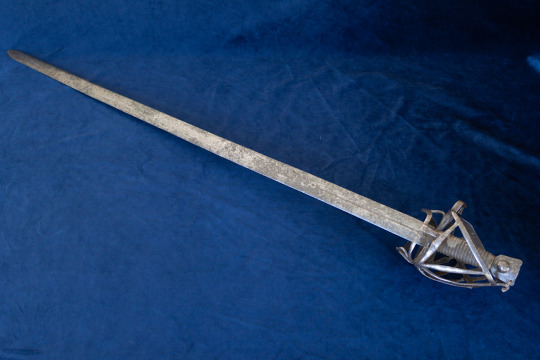
Early 18th Century Venetian 'Schiavona' Sword
The Schiavona is an iconic basket-hilted sword that was closely associated with the Italian city state of Venice. The earliest examples are believed to have come from an elite body of Slavic soldiers hired by the Venetian council, and date back as far as the late 16th Century.

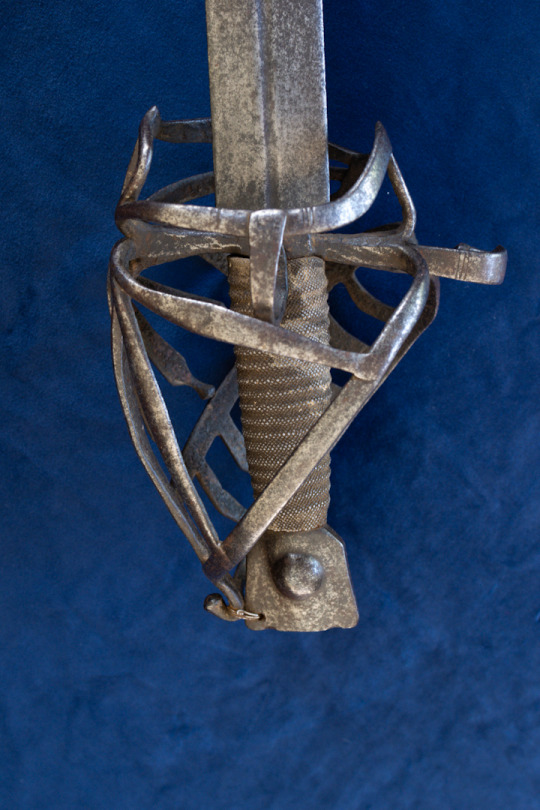
Schiavona are identified by their unique basket hilts and 'cats head' pommels. The renowned sword historian and author, Ewart Oakeshott grouped the schiavona basket hilts into two broad categories, the simplified Type 1 with it's broad flat bars, and the Type 2 of lattice work design.
They Type 1 hilt began to appear around the early 1600's and the first Type 2 between 1620 and 1630. Type 1's remained in use for most of the 17th Century after which Type 2 hilts became dominant.
Over the life of schiavona swords, (1600 - 1797) their hilts became increasingly complex and ornate as they became associated with the character of Venice, with the upper levels of society also carrying their own schiavonas.



Based on the features of the hilt, this sword most likely dates to 1710 - 1740. The iron pommel and 93 cm blade suggest that it is of munitions grade and was likely carried by a regular cavalry man.
Stats:
Overall Length - 1,075 mm
Blade Length - 930 mm
Point of Balance - 165 mm
Grip Length - 135 mm
Inside Grip Length - 94 mm
Weight - 1,090 grams
237 notes
·
View notes
Text
The sword of the day is the zweihänder.
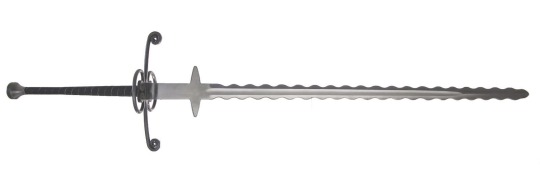
This was one of the largest swords ever wielded in battle, commonly 6 feet long or more. It was used by German Landsknechte (mercenaries), who are also some of the most fabulously dressed warriors to ever set foot on the battlefield. In battle, its role was to break through enemy pike lines on the front lines of combat, an exceedingly dangerous job that got its wielders paid very well.
98 notes
·
View notes
Text
The sword* of the day is the kris.

The kris is a weapon from Indonesia, particularly the largest island of Java. It has immense cultural and spiritual significance, so ornately decorated blades like this one are not uncommon. Though it originated in Java, the design traveled throughout Southeast Asia, and many similar blades can be found in the region (such as the Moro kris from the Philippines, which is closer to a sword in size).
*I suppose this is more of a dagger than a sword, but my rules for the sword of the day are that any historical melee weapon is considered a sword.
34 notes
·
View notes
Text
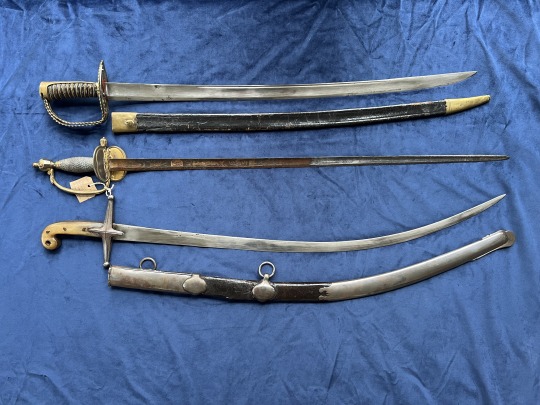
New sword day
Always a pleasure to come home to a parcel containing swords.
Top to bottom they are:
French infantry officers Sabre' à Garde Tournante circa 1780 -1800.
British 1796 pattern infantry officers' sword (co-shipped for a friend).
French cavalry officers' Sabre à l'Orientale circa 1810 - 1830.
43 notes
·
View notes
Text
The Spadroon is Not a Militarized Smallsword
“Spadroon is a militarised smallsword” – This is a statement I hear a lot, and one I would like to see an end to. Not because the smallsword is a bad weapon, but because that statement undermines what the spadroon is and how it developed. The implication is that gentlemen in the late 18th century started adopting a slightly beefy smallsword to utilize their existing smallsword/foil skills. But this ignores the fact that spadroons were not new, they were not all for gentlemen, and that the development of smallswords and spadroons was a parallel one.
The spadroon was not based on the smallsword, they were both creations of a trend towards double shell simpler hilted swords that emphasized the point and were easy to wear/carry. This development really began in the early 17th century, and in some cases a little earlier in the late 16th. The smallsword is often said to have evolved out of the rapier, and so did the spadroon from military swords of the period. The mortuary, walloon and other munitions grade military swords of the 17th century spreading approx. 1630-1680. These were not even exclusively ”gentlemans” swords, but general use military swords.
Additionally, the “Spadroon is a militarised smallsword” statement dismisses it’s cutting ability as a throw away feature. Assuming it is merely beefed up smallsword for war that still can’t really cut. Yet that is far from true. The spadroon is a cut and thrust sword just as most 19th century sabres were intended to be. Are there bad examples? Sure, but don’t judge an entire category of swords by those bad examples. Don’t even judge the infamous 1796 spadroon by the bad examples, as there is incredible variety to be found. Blades found on the 1796 can be anything from as light as a smallsword to as beefy as some 17th century backswords. All the while still being a spadroon. I am not including the really beefy broadsword bladed 1796s. Even the double shell guards of the 1796 get criticized because they are a copy of the smallsword and not suited to cut and thrust, and yet this ignores the fact that double shell guatds were really popular on military cut and thrust swords for approximately 200 years, for hangers, cutlass, spadroons and broadswords.
The spadroon often looks similar to a smallsword at a casual glance, but that is because of simultaneous development. The spadroon was not a short-lived fad or experiment. Its service was as long as the smallsword, and in some cases longer still. Time to separate these weapons and appreciate them both for what they were and their long and colourful histories.
–Nick Thomas, Academy of Historical Fencing
I agree with Nick, and would also add that many spadroon hilts do not bear any resemblance to smallsword hilts. “Spadroon” really describes a blade type (straight cut and thrust blade) more than an overall sword type (blade and hilt). Spadroons can have just about any hilt type that was to be found in the 17th-19th Centuries. A while back Nick made a nice graphic showing various spadroon hilts over time. Click here for a larger version.
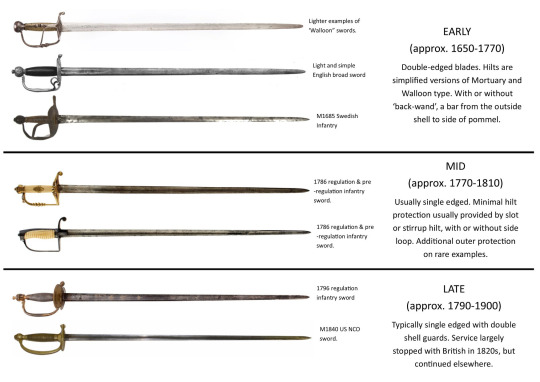
86 notes
·
View notes
Text
The sword of the day is the spadroon.

This is a European and American sword that was in use in the late 17th and early 18th centuries. It is a midpoint of sorts between the smallsword, which had no sharpened cutting edge, and the much heavier broadsword. As a fairly light sword, it is able to make quick and agile cuts while also maintaining an excellent profile for thrusting. After falling out of use as a military weapon, the spadroon continued to be used in a ceremonial capacity as an officer’s sword for quite some time.
75 notes
·
View notes
Text
37 notes
·
View notes
Text
youtube
Oh wow, what an incredible artefact.
#polearms#arms and armour#16th Century#Antiques#Spetum#Antique Weapons#Weapons as status symbols#Youtube
75 notes
·
View notes
Text

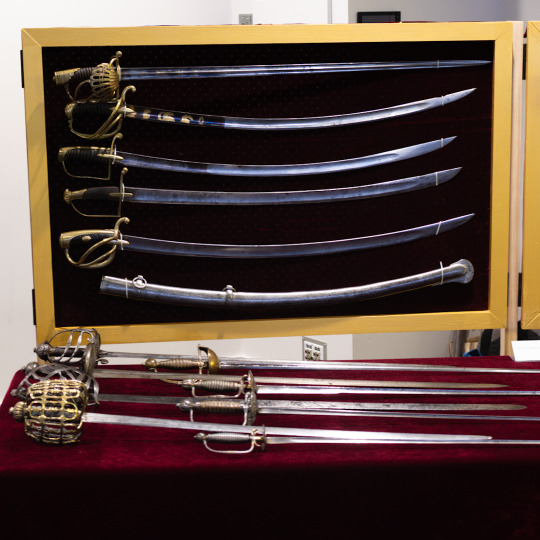
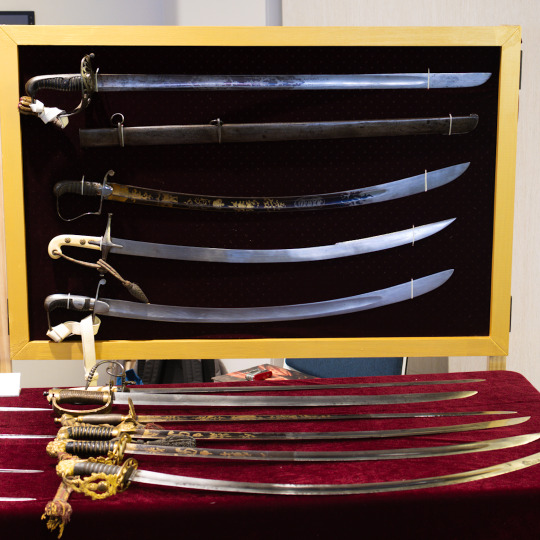
Photos of the sword display I had at last weekends excellent Auckland Blade and Knife show.
Was great to see meet with New Zealand's very talented knife makers showing off their work. Truly inspiring works of art.
For my display I opted to have a selection from the collection that covered a broad range instead of focusing on the one topic.


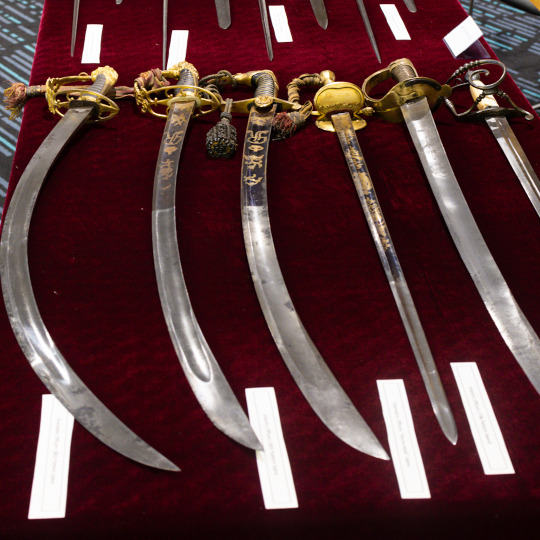
It was also my first use of the new boards I made after the last show. These are on their own stands giving me more table space.
Despite being a bit rough about the edges (remember folks, measure twice, cut once 🤣) they worked well. The next challenge is to improve on how the swords are mounted. Cable ties work great, but they're fiddly to pass through the cloth backing while trying to hold up a sword at the same time.
My thanks to The Auckland Blade Show for organising such a great event and for allowing me to participate. Shows like these are key to showing people just what is available and possible.
139 notes
·
View notes
Text
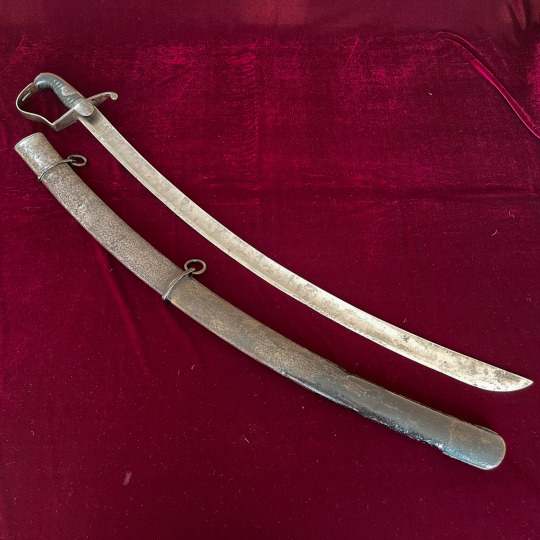


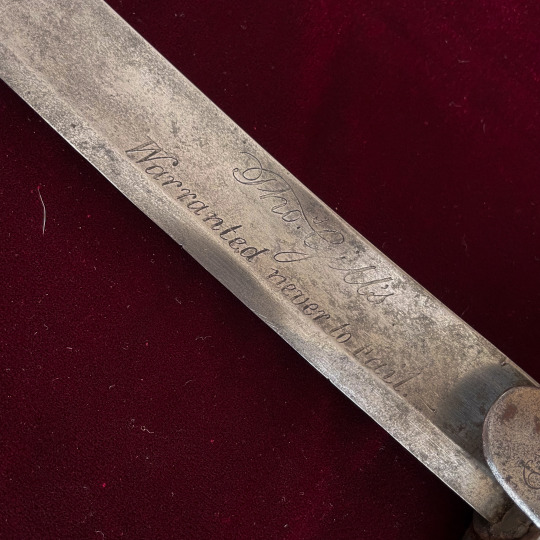

1796 Pattern light cavalry troopers sabre by Thomas Gill, circa 1796 - 1801.
111 notes
·
View notes










